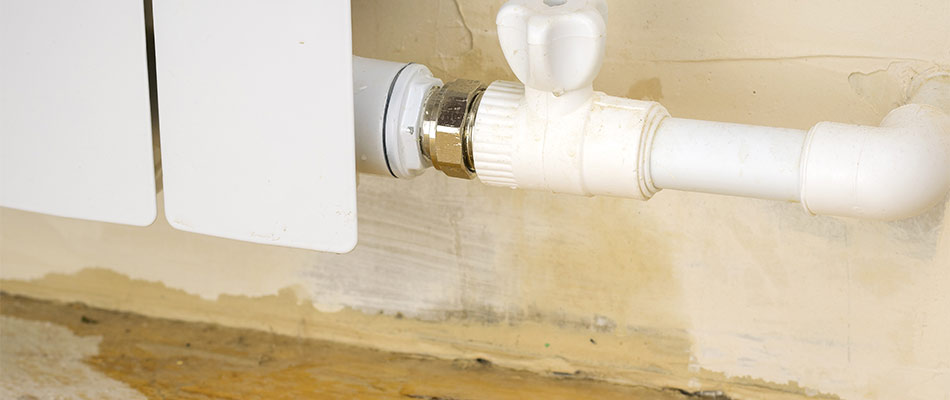Just how to Locate as well as Repair Work Water Leaks-- A Comprehensive Overview
Just how to Locate as well as Repair Work Water Leaks-- A Comprehensive Overview
Blog Article
The article following next involving Finding hidden leaks is rather motivating. Check it out yourself and see what you think of it.

Early detection of leaking water lines can mitigate a potential catastrophe. Some small water leaks may not be noticeable.
1. Take A Look At the Water Meter
Every house has a water meter. Inspecting it is a surefire way that aids you discover leaks. For beginners, switch off all the water sources. Make sure no one will purge, make use of the faucet, shower, run the cleaning device or dish washer. From there, go to the meter as well as watch if it will certainly transform. Since nobody is utilizing it, there should be no movements. That shows a fast-moving leakage if it relocates. Similarly, if you identify no changes, wait a hr or 2 and also examine back once more. This implies you may have a slow leakage that can also be underground.
2. Inspect Water Consumption
Analyze your water expenses and track your water intake. As the one paying it, you should discover if there are any disparities. If you find sudden changes, despite your usage coinciding, it indicates that you have leakages in your plumbing system. Bear in mind, your water bill must drop under the very same range each month. A sudden spike in your bill shows a fast-moving leak.
A constant rise every month, even with the exact same habits, reveals you have a slow leak that's also gradually escalating. Call a plumber to thoroughly check your residential property, specifically if you really feel a warm area on your flooring with piping below.
3. Do a Food Coloring Examination
30% comes from bathrooms when it comes to water consumption. Examination to see if they are running effectively. Decrease specks of food shade in the tank and also wait 10 minutes. If the shade in some way infiltrates your bowl throughout that time without flushing, there's a leak between the container as well as dish.
4. Asses Exterior Lines
Do not neglect to inspect your exterior water lines as well. Must water leak out of the connection, you have a loosened rubber gasket. One small leak can waste heaps of water and also increase your water expense.
5. Inspect as well as Assess the Situation
Homeowners must make it a routine to examine under the sink counters and even inside closets for any kind of bad odor or mold and mildew development. These two warnings show a leak so prompt attention is called for. Doing routine evaluations, even bi-annually, can conserve you from a major issue.
Inspect for discolorations as well as deteriorating as many pipelines as well as home appliances have a life span. If you believe leaking water lines in your plumbing system, do not wait for it to rise.
Early discovery of dripping water lines can minimize a prospective disaster. Some small water leaks might not be noticeable. Checking it is a surefire means that helps you uncover leaks. One small leak can throw away lots of water and surge your water costs.
If you suspect dripping water lines in your plumbing system, don't wait for it to intensify.
How to Know If Your Home Has a Hidden Leak
Water Meter Reveals Inexplicable Water Usage
If you’d like to test whether or not there’s a leak somewhere in your home, you can do this using your water meter. Here is how to conduct the test:
Don’t use any water in your home for at least 30 minutes; this also means not turning on faucets or water-using appliances.
Go outside, and check your water meter for activity.
If your water meter shows that there was activity, even though no one was using any water, this proves that there is a leak in your home.Visible Mold or Mildew Growth
Leaks behind walls create moist, dark environments that allow mold and mildew to grow and thrive. Eventually, you might see mold growth forming on the wall closest to a hidden leak.
If mold is growing in an area that receives a high amount of moisture, such as a bathroom, it may simply be an indication that better ventilation is needed. However, if you see mold growth on a wall or the ceiling in an area where you would not expect, you probably have a hidden leak.
Musty, Mildew Odor
Sometimes you might not be able to see the mold or mildew that is growing as a result of a leak. However, the smell can give the problem away just as easily. If you catch a whiff of something musty, there’s a good chance that old water is collecting somewhere in your home that you can’t see.
Stained/Warped Walls, Ceilings, or Floors
When your home soaks up water, a variety of red flags can become visible, including ceiling stains, bubbling drywall, warped walls, and sagging floors. While these issues can be caused by excess humidity, they can also be signs that a pipe or plumbing connection has started leaking behind your walls.
Inexplicably High Water Bill
After a while, you get a general sense for what your water bill should be. If you own a pool or sprinkler system, your bill will tend to be higher during summer. However, if you receive a water bill that seems especially high, and you can’t figure out what caused it, then you may have a hidden leak somewhere that’s increasing your bill.
https://www.plumbingjoint.com/blog/2019/july/how-to-know-if-your-home-has-a-hidden-leak/

Do you really like reading up on Leaking water lines? Post a remark down below. We'd be pleased to see your responses about this posting. We are looking forward to see you back again in the near future. Loved our piece? Please share it. Let somebody else find it. We thank you for reading our article about Leaking water lines.
Report this page